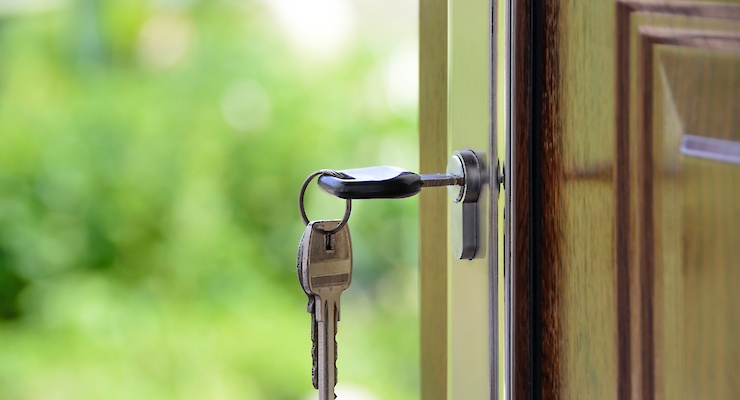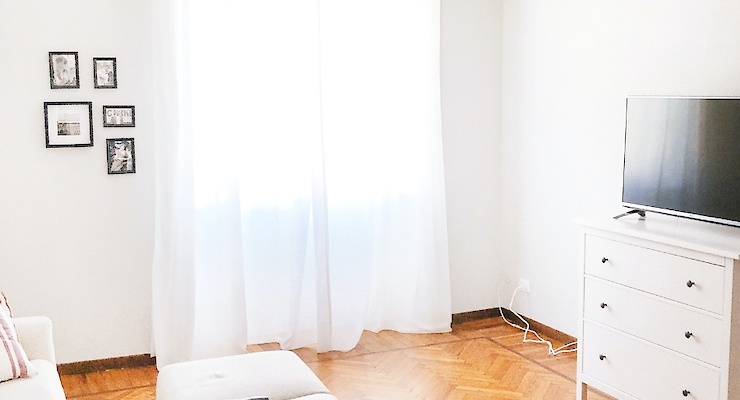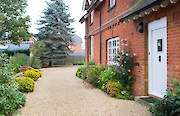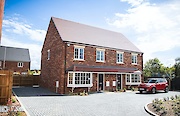


Head of Content

Mortgage Advisor & Director

Buy-to-let mortgages are used by landlords to purchase a property with the aim of generating rental income, but how do they work, how do you get one, and what deals are available? Here you’ll learn the answers to these questions and more.
What is a buy-to-let mortgage & how do they work?
A buy-to-let mortgage is a type of mortgage you can use to buy property that you intend to let out to tenants. They work similarly to residential mortgages but the way affordability is assessed sets them apart. Rather than looking at your personal income, buy-to-let lenders will work out your maximum borrowing based on the property’s projected rental income.
Other differences between buy-to-let and residential mortgages include:
- Deposit requirements are higher for buy-to-let
- Interest rates are generally higher
- Most buy-to-let mortgages are interest-only
- The majority of buy-to-let mortgages are unregulated
- You pay a higher stamp duty rate
Like residential mortgages, buy-to-let mortgages can be fixed or variable rate, and lenders have multiple deals with varying introductory rate periods in their range.
How affordability is calculated

Buy-to-let mortgage providers will work out the maximum they are prepared to let you borrow based on the strength of the investment. The majority of lenders will insist that the forecast rental income exceeds the mortgage payments by at least 125% to 145%.
Some lenders in this market will also take personal income into account and won’t approve you for a mortgage unless you are earning a minimum of £25,000 from other sources. Other mortgage providers will, however, base their lending decision purely on rental income.
Top Slicing
Finally, there is a middle ground that a minority of lenders will allow you to fall back on if the projected rental income doesn’t stretch far enough to allow you to qualify for the mortgage you need. Through a process called top slicing, you can declare your personal income and use it to make up the shortfall between the mortgage payments and expected rental income.
Providing proof of income
You can obtain a rental income projection by contacting an ARLA-approved letting agent, but the evidence itself would come from the valuation report, which will verify whether the rental projection is realistic. Three months’ bank statements plus wage slips is standard for proving personal income if the mortgage lender requests this as well.
If you are a portfolio landlord looking to expand the number of properties on your books, the lender will expect to see two years’ tax returns plus copies of any lease agreements.
Calculating your mortgage repayments
Buy-to-let mortgage repayments are calculated in exactly the same way as residential mortgages. The amount you pay each month will depend on the term length, interest rate and the amount you have borrowed.
The calculator below can help you work out what your buy-to-let mortgage will cost you each month and overall. We have set it to calculate results for an interest-only mortgage with an interest rate of 5.5% and a term length of 25 years, representative of the current buy-to-let market, but you can change these values by default.
Read more about how buy-to-let mortgage repayments are calculated in our standalone guide.
Deposit requirements and other criteria
The majority of buy-to-let mortgages are offered with a loan-to-value (LTV) ratio of 75-85%, which means you will need a deposit of at least 15-25% to get approved. Your options might be limited, but not necessarily non-existent if you have less deposit than this.
The table below reveals how many approachable lenders there will be based on your LTV.
|
Loan-to-Value (LTV) Ratio |
Approximate Number of Willing Lenders |
|
90-100% |
None - seek professional advice |
|
80-90% |
30 |
|
70-80% |
More than 60 |
|
60-70% |
More than 70 |
|
50-60% |
More than 70 |
Other eligibility requirements
Below you will find the other criteria you will need to meet to qualify for a buy-to-let mortgage:
- Landlord experience: Although there are lenders who offer mortgages for first-time landlords, most lenders prefer applicants to have buy-to-let experience.
- Homeownership: Your options will be restricted if you are applying for a buy-to-let mortgage and don’t own a residential property. Most lenders in this market prefer borrowers who have owned their own home for at least six months.
- Credit history: It is possible to get a buy-to-let mortgage with bad credit, but your chances of approval may depend on the age and severity of the credit issues, as well as why they occurred. There are specialist lenders for landlords with more severe adverse.
- Age: Specialist advice is recommended if you will be aged 75-85 during the mortgage term, as age restrictions will prevent some mortgage providers from approving you.
- Property type: If the property you want to let out has unusual features or non-standard construction, you might be limited to specialist lenders. Furthermore, some buy-to-let lenders won’t offer finance for HMOs or multi-unit freehold blocks.
- Energy Performance Certificate: All buy-to-let properties in England and Wales must hold an EPC rating of at least ‘E’ unless exempt. You can read more about the rules and regulations surrounding this on the UK government’s website.
Keep in mind that you don’t need to fit the criteria above down to a tee. Our brokers have access to specialist buy-to-let lenders who can be more flexible with their requirements.
How to get a buy-to-let mortgage

Here are the steps to follow to get started with a buy-to-let mortgage application:
- Work out your rental income: If you’re unsure how much rent the property will generate, contact an ARLA-approved letting agent to get an initial report. The amount of rental income you can generate will be formally confirmed by the valuation report.
- Compare rates and secure an AiP: We can compare rates from across the market for you and and secure you an agreement in principle in minutes.
- Speak to a broker: After you have secured your AiP, one of our buy-to-let mortgage brokers will review your case to make sure you are eligible and getting the best deal. They will then use their knowledge, experience and lender contacts to make sure your application goes through smoothly. Get started below:

Secure your buy-to-let mortgage today
Which lenders offer buy-to-let mortgages?

The majority of high street mortgage providers, including HSBC, Natwest, Santander and Barclays offer a range of buy-to-let mortgages, but there are also specialist lenders in this space, including Godiva and West One Loans, who can be more flexible with criteria.
Below you will find examples of some of the specific criteria you might encounter from them:
- HSBC: Offer buy-to-let mortgages with a maximum LTV of 75%
- Santander: Will lend for standard properties as well as freehold houses with self-contained flats, as long as acceptable leaseholds and management are in place
- West One Loans: Have a maximum borrowing amount of £10 million across a property portfolio, with no limit on the number of properties and loans with other lenders
- Godiva: Specialises in buy-to-let, buy caps the LTV at 75% for new build properties
- Barclays: Offers a range of deals, and lends to first-time landlords and doesn’t state any caveats for this
You can find more information about the available lenders in our buy-to-let mortgage lenders guide.
What interest rates to expect
The interest rates for buy-to-let mortgages are generally higher than they are for residential mortgages, usually around half a percentage point to a full percentage point higher. The exact rate you qualify for will depend on the overall strength of your application which the lender will assess based on the following factors:
- The loan-to-value (LTV) ratio (the lower, the better)
- Your credit history (the cleaner, the better)
- How much landlord experience you have
The rate you should expect may also vary depending on the type of product you choose. For example, fixed rate and variable rate deals tend to have their own set of interest rates.
Converting an existing mortgage to buy-to-let
If you have a residential mortgage and want to convert it to a buy-to-let to earn rental income from the property, you can potentially do this through your current lender or find a new one. Most lenders will prefer you to have lived in the property for at least six months.
This would be treated as a remortgage and the lender will carry out an assessment to ensure you meet their eligibility criteria for a buy-to-let mortgage. In addition to these checks, they will be keen to know where you plan to live after letting your home out. If you will have a new residential mortgage or rent to pay, they will factor that into their affordability checks.
It’s worth speaking to your current lender as a starting point, to find out whether they would allow you to switch to one of their buy-to-let products. Be sure to speak to a mortgage broker before agreeing to anything, though, as there could be a better deal elsewhere.
If your plan is to convert your existing property into a buy-to-let and take out a new residential mortgage for your next home, there is a bespoke type of mortgage arrangement - called a let-to-buy mortgage - that could help you do both simultaneously.
Let-to-buy mortgages
With a let-to-buy arrangement, you take out two mortgages at the same time: a buy-to-let mortgage for your current home and a new residential deal for the onward purchase.
When converting your existing mortgage to buy-to-let, you release equity from your home to serve as the deposit for the new property you are buying.
You will need to hold between 60% and 75% equity in your home to get a let-to-buy mortgage, with at least 5-10% of this becoming your mortgage deposit for the new property. Standard criteria for both the buy-to-let and residential mortgage will apply.
Some mortgage lenders offer let-to-buy as a package deal, providing both the buy-to-let mortgage and the new residential one, but it is possible to use two separate lenders if the deals they offer are the most cost-effective and suitable ones for you in the long run.
Types of property you can invest in
You can potentially put a buy-to-let mortgage onto various property types to generate rental income from them. Lenders tend to impose specific LTV caps on certain property and investment types, as the level of risk can vary from one to another.
The table below offers an overview of the types of property you can use a buy-to-let mortgage to invest in, and the typical LTV requirements you might encounter:
|
Property Type |
Typical LTV Requirement |
|
75% |
|
|
70-80% |
|
|
75% |
|
|
70-75% |
|
|
65-75% |
|
|
70% |
|
|
70-75% |
Remortgaging a buy-to-let property
Buy-to-let remortgages work in the same way as residential ones. Most landlords begin the process of locking into a new deal at least six months before their introductory rates period expires, to avoid ending up on their lender’s more costly standard variable rate (SVR).
There are often exclusive rates and deals available for buy-to-let remortgage customers, with some lenders offering incentives to switch to them and others rewarding existing customers.
Your chances of securing the best available deal will depend on the strength of your application, namely how much equity you hold and the condition of your credit reports.
Although most lenders will refuse to offer you a refinance until at least six months after you took out your original mortgage, there are specialist providers who offer day-one remortgages, which can be useful for property owners who are remortgaging for investment purposes.
It is possible to release equity from a buy-to-let property when you refinance, and many portfolio landlords do this to expand their number of properties - read more below.
Mortgages for portfolio landlords
Buy-to-let landlords who hold four or more investment properties are classed as ‘portfolio’ landlords, and there are lenders who offer special arrangements for this type of borrower.
A portfolio mortgage allows you to hold multiple mortgages under a single umbrella with the same lender. This means you will receive one mortgage statement each month, rather than several, helping you keep track of your rental income and repayments.
There are other benefits too, such as exclusive rates from certain lenders, and the option to release equity when you remortgage and use it to expand your portfolio.
The criteria for portfolio mortgages can vary, but the general requirements are as follows:
- Minimum number of properties: Must own at least four buy-to-let properties
- Maximum number of properties: This can vary, as some lenders will draw the line at five and others will stretch to 10 or more. Some lenders also place restrictions on the number of properties you can have mortgaged with other lenders.
- Borrowing limits: Maximum borrowing is tied to the rental potential of the properties in the portfolio, but some lenders have a cap on total aggregate borrowing across portfolios. Around £5-10 million is a typical limit, but some lenders have no maximum.
- Business plan: Some lenders will expect to see a business plan to prove the investments across your portfolio are viable, especially if it is a high value portfolio.
Options for first-time landlords
It can be more difficult to get a buy-to-let mortgage as a first-time landlord, but only a handful of lenders will decline you outright because of this. Others will apply caveats such as an LTV cap, minimum personal income requirements and restrictions on certain property types.
Most lenders will insist that first-time landlords at least own residential property, but the general criteria for newcomers to this market is otherwise the same.
Some mortgage providers will class you as a first-time buyer if you haven’t owned an investment property within the last six months, while others only if you have never owned one.
Why use Teito for your buy-to-let mortgage needs?
On Teito, you can access expert advice from a broker who specialises in buy-to-let mortgages to boost your chances of landing the best deal.
Here are just some of the reasons our customers choose us:
- You can secure an agreement in principle in minutes
- Access advice from a broker who specialises in buy-to-let
- Exclusive rates and deals are available
- We are 5-star rated on leading review websites
Ready to take advantage of a free, no-obligation chat with a mortgage broker who specialises in buy-to-let? Get started here.
FAQs
Yes. Although the majority of buy-to-let mortgages are taken on an interest-only basis, repayment buy-to-let mortgages are also available for landlords who want to pay off their mortgage loan during the term, and don’t mind higher monthly outgoings.
Choosing an Adviser
Selecting a qualified and experienced mortgage adviser is of great importance. To choose a suitable adviser, evaluate their qualifications, experience, and reputation, and ensure they are regulated by the Financial Conduct Authority (FCA).
Read reviews from previous clients and make sure they provide a clear explanation of the products and services they offer, as well as the fees and charges associated with them.

























































































































































